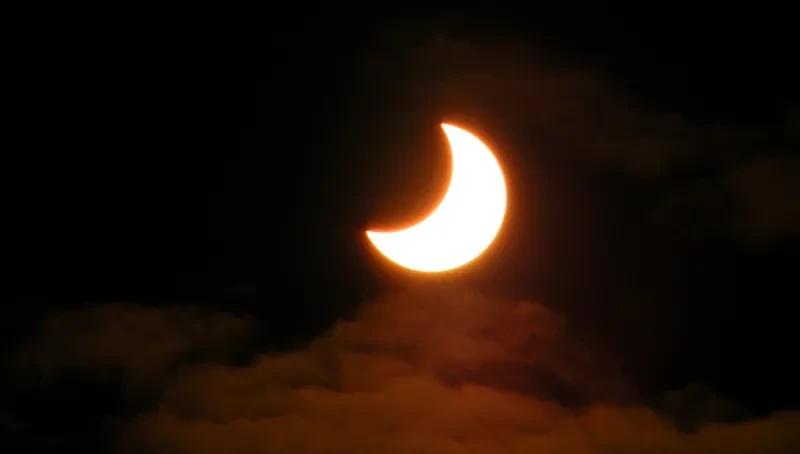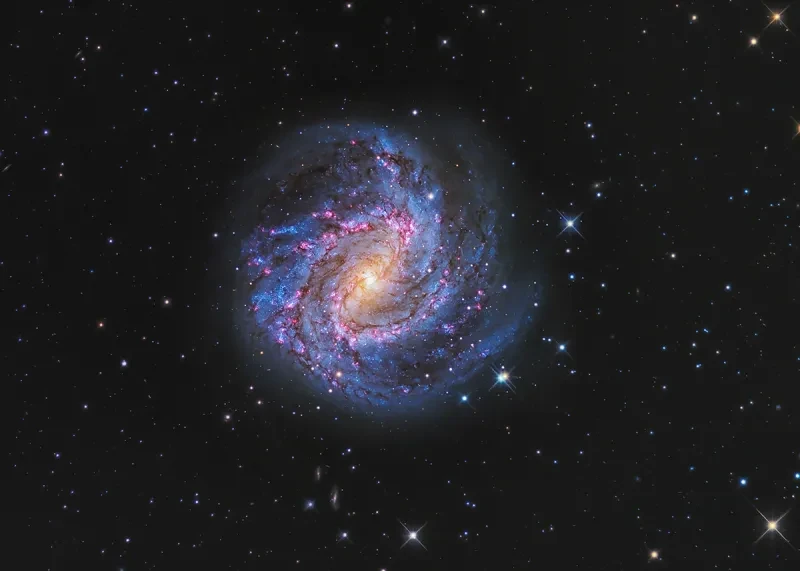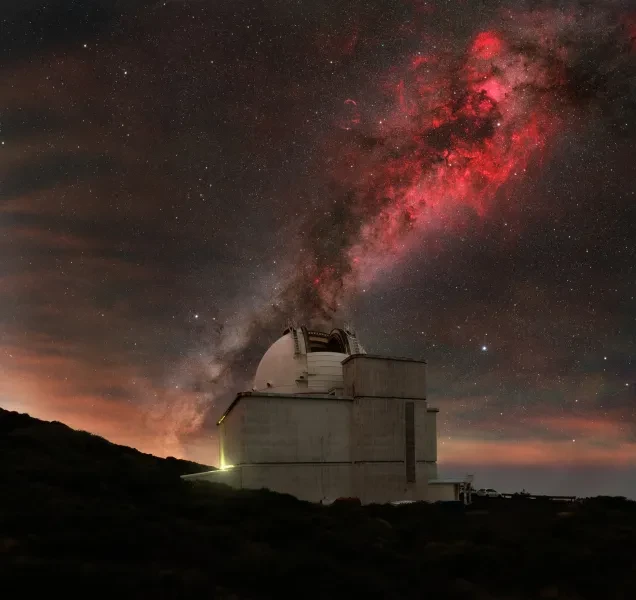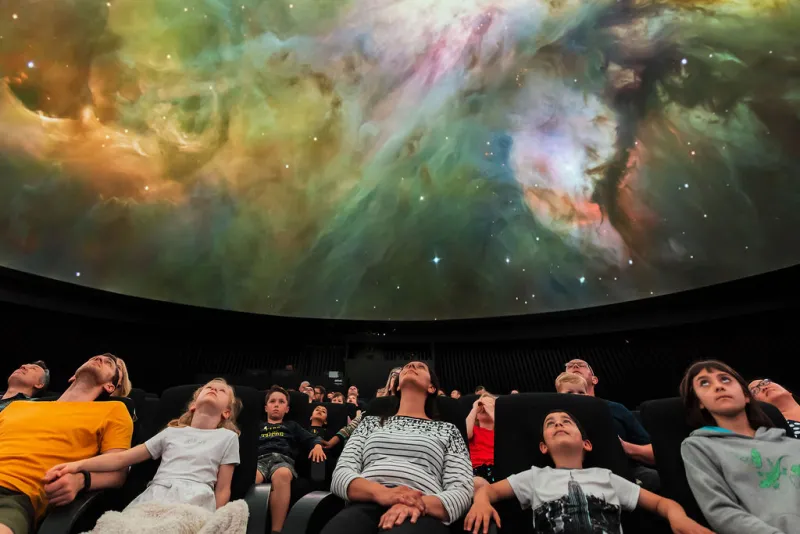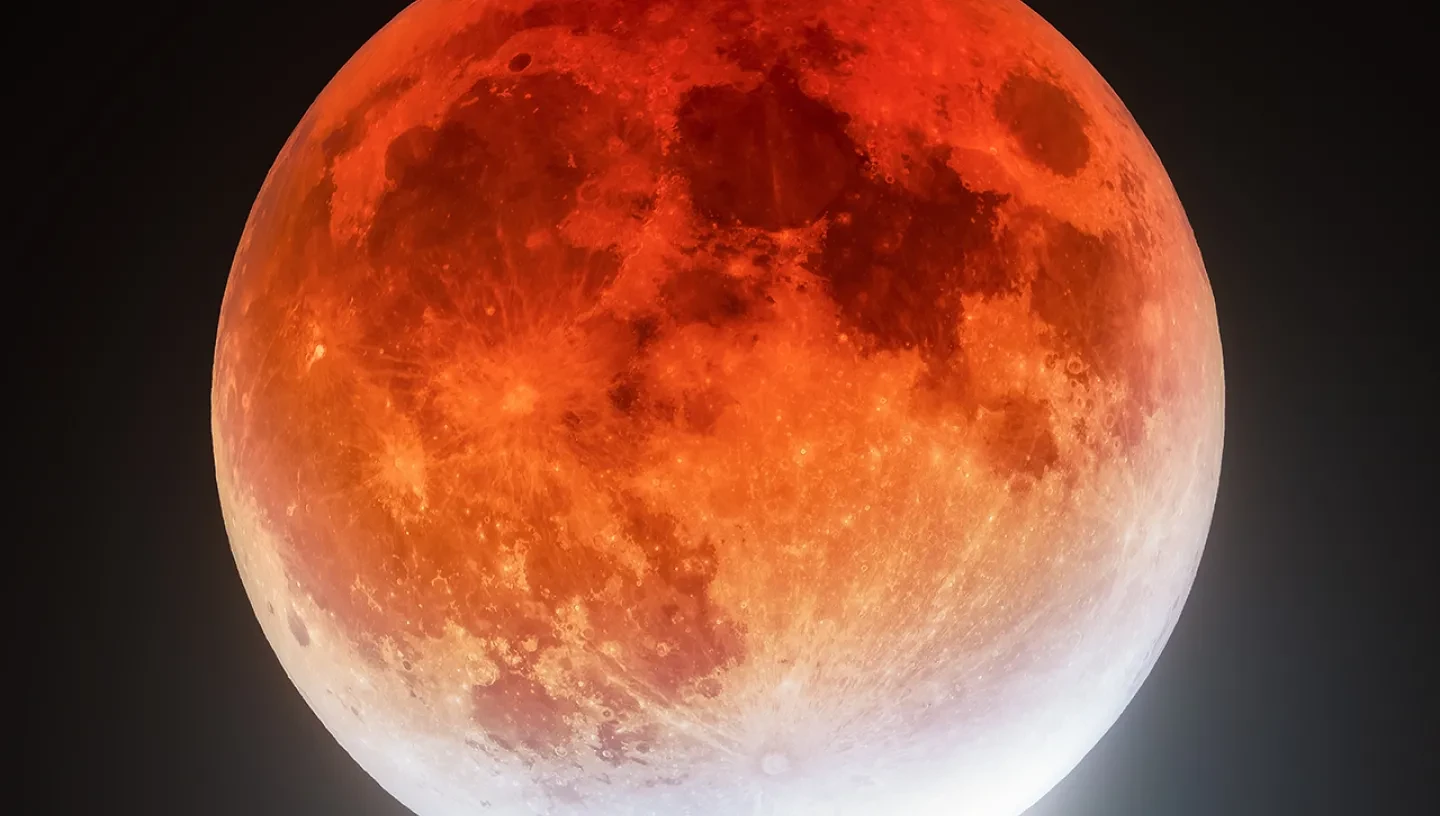
Find out how to make the most of two eclipses this month, spot the dazzling Pleiades star cluster, and more.
Top 3 things to see in the night sky in March 2025:
- 14 March - Get up early to see the partial lunar eclipse
- 29 March - Follow up the lunar eclipse with a partial solar eclipse
- Throughout the month - Say goodbye to Taurus the bull
Details given are for London and may vary for other parts of the UK.
See April's night sky highlights
An early rise for a lunar eclipse
In the early hours of 14 March the Moon will travel through the Earth’s shadow, resulting in a total lunar eclipse for many around the world.
Those of us in the UK won’t be able to see the 'blood moon' (so-called due to the reddish tint) in all its glory, but we’ll still be treated to a spectacular partial lunar eclipse.
The Moon will pass into the lighter part of the Earth’s shadow (the penumbra) at 3.57 am, but the show won’t really start until 5.09 am, when the darker part of Earth’s shadow (the umbra) begins to fall over the Moon.
The total eclipse will begin at 6.26 am, but this will be shortly after the Moon has sunk below the horizon in London. Readers in most of the Americas will be able to see the total lunar eclipse.
This is quite an early one, so don’t forget to set your alarms!
Learn more about lunar eclipses
Eclipse part two: the solar eclipse!
It’s an eclipse special this month with a partial solar eclipse occurring on 29 March. There’s nothing like a pair of eclipses to remind us that we’re part of an intricate clockwork of orbits in the Solar System.
The partial solar eclipse will begin when the Moon first appears to touch the Sun’s disk at 10.07 am, and end at 12 pm when the Moon and Sun separate in the sky. Maximum coverage takes place at 11.03, at which point between 30-40% of the Sun will be obscured.
The most important thing to remember about solar eclipses is to never look directly at the Sun! There are many ways you can view this event without risking your eyesight.
A good option is to get a pair of eclipse glasses, but it’s important to make sure they are undamaged and from a trustworthy supplier.
If you don’t have a pair, you can use basic materials to create a pinhole projection of the eclipse. Simply pierce a small hole in a sheet of cardboard and hold it up to the Sun. You should be able to see the eclipse projected within the shadow cast by the card! This can even be achieved using a colander.
Of course, the best way to view the eclipse will be to tune into the Royal Observatory's live stream!
Say farewell to Taurus the bull
If for some reason you don’t like eclipses, you can use March to say goodbye to the constellation of Taurus before it sinks below the nighttime horizon after the end of the month.
Taurus is one of the oldest constellations in the night sky, having potentially been identified as a bull by humans as long as 17,000 years ago. The ancient Greeks associated it with various myths and legends, most famously with the story of the princess Europa who was whisked away on the back of a snowy white bull.
According to the story, Zeus was enchanted by the princess as she was picking flowers near the coast. To get her attention, he transformed himself into a beautiful bull with snow-white fur. After decorating the bull with her flowers, Europa climbed upon his back, only to be promptly abducted to the island of Crete where, thankfully, she lived happily ever after.
Spot the starry sisters
Nearby Taurus is a distinctive cluster of stars known as the Pleiades. They look a little bit like a tiny version of the Plough, with the stars clustered so close together they’re known for being used as a celestial eye test – if you can see seven stars, you’re blessed with exceptional vision.
In actual fact there are about 1,000 stars in the Pleiades. It is one of the closest open clusters to Earth at only 444 light years away, and consists mostly of very hot, young blue stars. Having only formed about 100 million years ago, the Pleiades are even younger than the dinosaurs!
Sometimes known as the Seven Sisters, in Greek mythology the Pleiades were seven daughters of Pleione the Oceanid and Atlas the Titan, and were placed in the night sky by Zeus as protection from Orion. As an open cluster of stars, the Pleiades were formed from the same cloud of gas and dust, making these stars, in a way, real celestial sisters.
Viewing the Pleiades with a pair of binoculars will allow you to see the surrounding nebulosity – ethereal blue clouds of gas and dust reflecting the light of the stars.
Together with the Pleiades, Taurus can be found in the southwestern sky in the early evening. You can find your way to the bull by following the line of Orion’s belt west, which will point you to Aldebaran, the brightest star in Taurus.
Southern Hemisphere stargazing - the Running Chicken Nebula
Readers in the Southern Hemisphere have their pick of a treasure trove of deep sky objects. A particularly gorgeous one though is the Running Chicken Nebula – a stellar nursery 6,500 light years away.
The Running Chicken Nebula, so named because it apparently looks like a running chicken, is an emission nebula containing an open star cluster. These young stars bathe the surrounding gas and dust in radiation, causing it to fluoresce. This results in a swirling array of colours.
Not only does this nebula contain an open star cluster and beautiful nebulosity, it also holds a great example of a celestial phenomenon known as Bok Globules. Thought to be areas of star formation, Bok Globules are blobs of gas and dust packed into such dense clumps that surrounding radiation cannot penetrate, making them look a bit like mysterious floating space rocks. The ones inside the Running Chicken Nebula are called Thackeray's Globules, after the astronomer Andrew David Thackeray who discovered them in 1950.
You’ll need a telescope if you want to try and spot this space chicken - look south a few hours after sunset and find the constellation Centaurus. The nebula will be by the centaur’s back hoof.
The Moon's phases in March 2025
First quarter: 6 March (16:32)
Full Moon: 14 March (06:55)
Lunar eclipse: During this full Moon the Earth's shadow will fall over the Moon
Last quarter: 22 March (11:30)
New Moon: 29 March (10:58)
Solar eclipse: During this new Moon, the Moon will pass in front of the Sun from our perspective on Earth
Stargazing Tips
- When looking at faint objects such as stars, nebulae, the Milky Way and other galaxies it is important to allow your eyes to adapt to the dark so that you can achieve better night vision.
- Allow 15 minutes for your eyes to become sensitive in the dark and remember not to look at your mobile phone or any other bright device when stargazing.
- If you're using a star app on your phone, switch on the red night vision mode.
You may also be interested in
An Eclipse From a Thousand Sunsets © Noah Kujawski | shortlisted in Astronomy Photographer of the Year 2022








